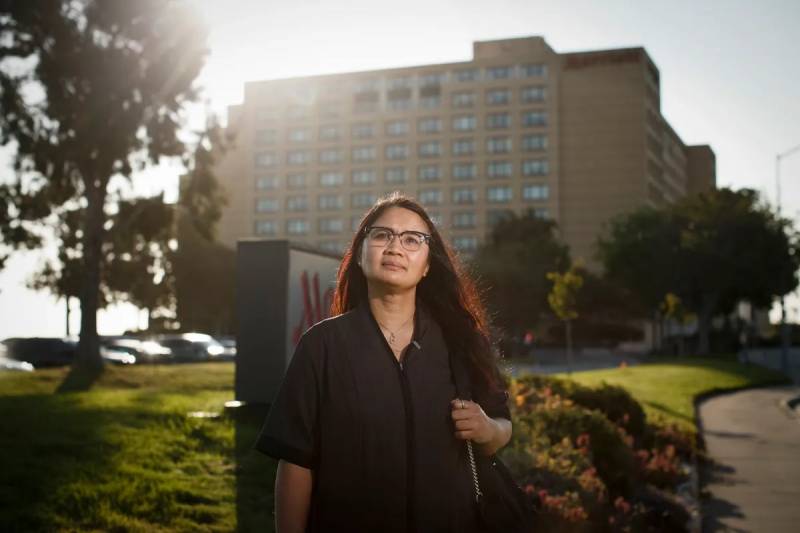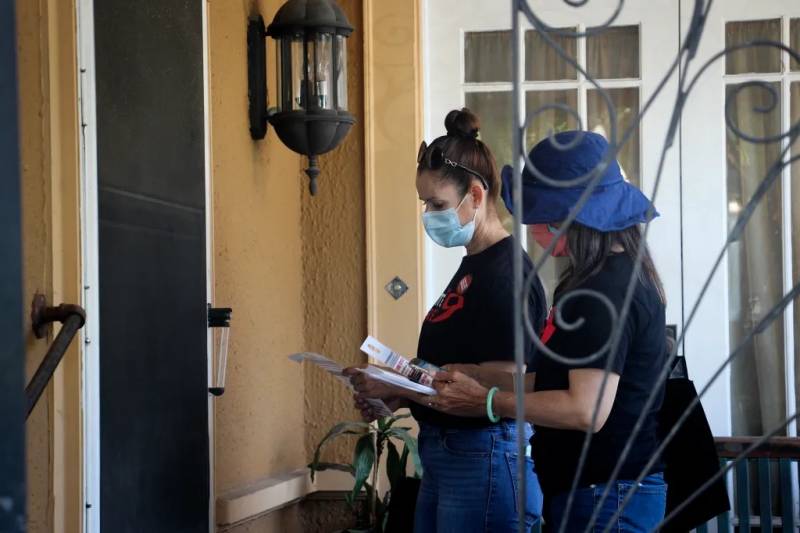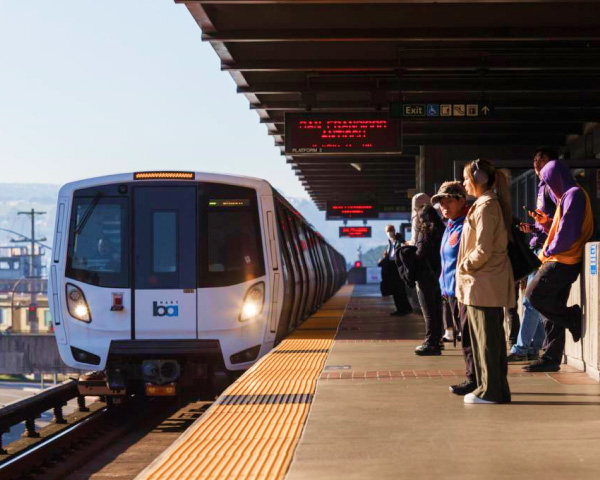S
hirley Reyes tucked herself next to her 17-year-old son on the couch, peppering him with questions about unions as he googled the cost and benefits of collective bargaining on his phone. Reyes, a Filipina single mother, was inquisitive — and a little anxious. Some labor representatives had already knocked on their cramped in-law unit in Daly City, a majority Asian community south of San Francisco. She wondered if she was risking one of her jobs cleaning hotel rooms simply by talking to them.
Her son’s findings began to put her at ease. Unions aim to negotiate higher wages and better benefits for workers. It’s likely the surgery she had six years ago would have cost her less under union-negotiated health insurance. After months of hushed discussions at work, Reyes was handed an official secret ballot. It was a yes or no question.
Do you wish to be represented for purposes of collective bargaining by UNITE HERE Local 2?
It’s a question a vast number of California workers, a third of whom make $15 an hour or less, haven’t had the opportunity to answer. Union participation is at historic lows and collective bargaining is less prevalent in retail, restaurants and hotels — segments of the private sector with high concentrations of low-wage jobs.
California wants to change that. The Future of Work Commission, convened by Democratic Gov. Gavin Newsom to think of moon shot goals for lifting millions of working Californians out of poverty, proposed getting more workers represented as part of the solution to stemming the state’s staggering wage gap. The commission, which included labor and business leaders, asserted in their final report released earlier this year that while a college degree reduces the chance of a low-wage job by 33%, union membership reduces the chance by 39%. That could go a long way in a state where 1 in 3 households with working adults struggle to afford basic necessities, while the top 2% control 20% of the wealth.
The commission urges employers and employees to reach agreement on a new social compact that would foster quality jobs over the next decade. But first that requires building consensus around the basic principle of giving workers a greater voice, whether through unions or worker organizations.
That hasn’t happened yet.
Diminished voices
The rapid growth of high-skilled tech jobs and the loss of industrial jobs to global labor markets have significantly widened the gap between rich and poor people. At the same time, worker organization has diminished: The share of California workers in a union has steadily declined from about 40% in the 1950s to 16% last year.
Union participation is especially low in the private sector, which makes up 84% of the state workforce. Today, 1 in 10 private-sector workers belongs to a union, compared to 1 in 2 in the public sector.
Yet these private-sector workers are most in need of a voice.
Numerous reports have documented the pandemic’s disproportionate impact on essential workers, many of whom are immigrants and women of color. Many low-wage workers are employed in the service economy, such as retail, hospitality and tourism. They are the ones making and delivering food, producing and packaging goods, and cleaning and caring for others but unable to keep up with their own bills.
For Reyes, who works at the Marriott Waterfront, voting yes to a union worked out for the better. After the contract was signed Aug. 4, Reyes’s wage will rise from $19.80 to $24.30 over the next year. Her health insurance premium dropped from $250 a month to $35. Dental insurance and the option of a 401(k) or pension plans were added.

R
eyes began putting $200 a month toward her son’s college tuition, pulling back on her long work days and, her favorite part, cooking dinner for her son. Though Reyes was laid off during the pandemic, the union contract gave her priority to return. When the company began rehiring, Reyes was among the first back.
“I’m not scared anymore,” Reyes said. “We have a contract now. We have job security.”
A group of MIT researchers surveyed workers nationally in 2017 and found that about half of nonunionized workers would vote to join a union. That’s up from 32% in 1995.
Of course, not all workers agree.
Sylvia Beltran, who was formerly unionized as an usher at the SAP Center in San José and now does freelance photography, isn’t looking for collective bargaining. Dues are high, and she enjoys her freelance schedule unconstricted by a contract. A few unions have been beset by power struggles and leadership scandals lately.
“[Unions] feel more like a corporation,” she said. “I think they are more in it to make money and less interested in workers.”
Unions can reduce inequality — at a cost
Some researchers say the decline in union membership has contributed to at least 10% of the wealth divide, according to a 2018 study published in the National Bureau of Economic Research. Henry Farber, an economics professor at Princeton University who co-authored the study, said because wealth inequality is linked to stagnating wages that hurt the lowest-paid workers, unions can act as a counterbalance by lifting up the bottom through wages and benefits.
Union workers in California are more likely to receive health care through their employers and to earn nearly 13% higher wages than nonunionized workers in similar industries, and they are 50% more likely to have an employer-sponsored retirement plan, according to a report by the UC Berkeley Labor Center. Those advantages put an estimated $18.5 billion annually into the hands of lower-income Californians, reducing their reliance on public safety nets and helping to stave off poverty.
Unions, however, come at a cost to businesses, which argue that the loss of profits will lead to fewer jobs, and the rigidity of union contracts will make it hard to adapt to change. Research from the ‘90s found that unionization slows the rate at which a company adds new jobs by 4 percentage points a year. Another study published more recently in The Quarterly Journal of Economics looked at the market value of publicly traded companies before and after they were unionized. It found that a union election victory led to a roughly 10% decrease in the company’s market value. And, thanks to a tight labor market, wages have been increasing for workers in typically lower-paying leisure and hospitality jobs, despite low union density.


